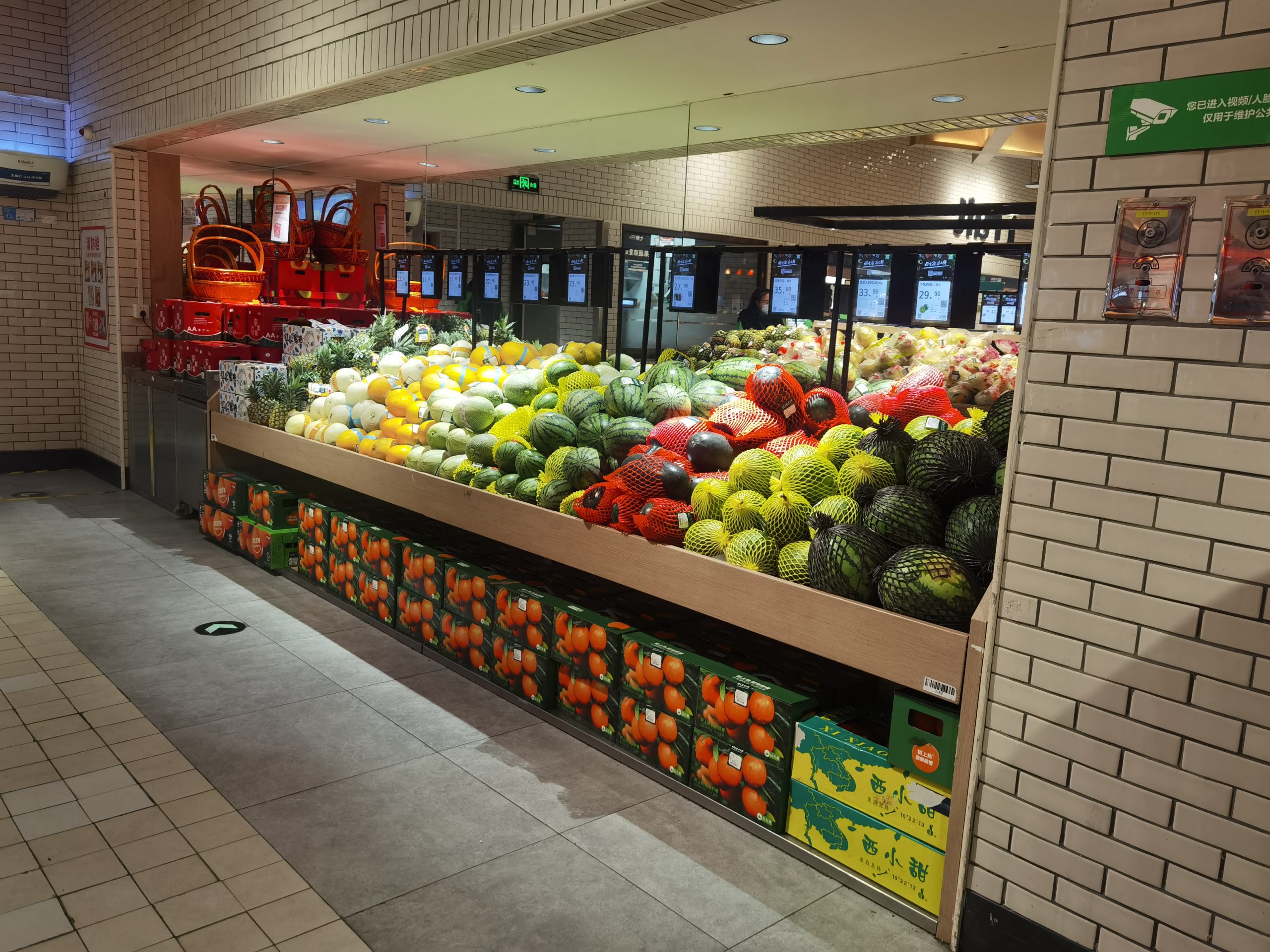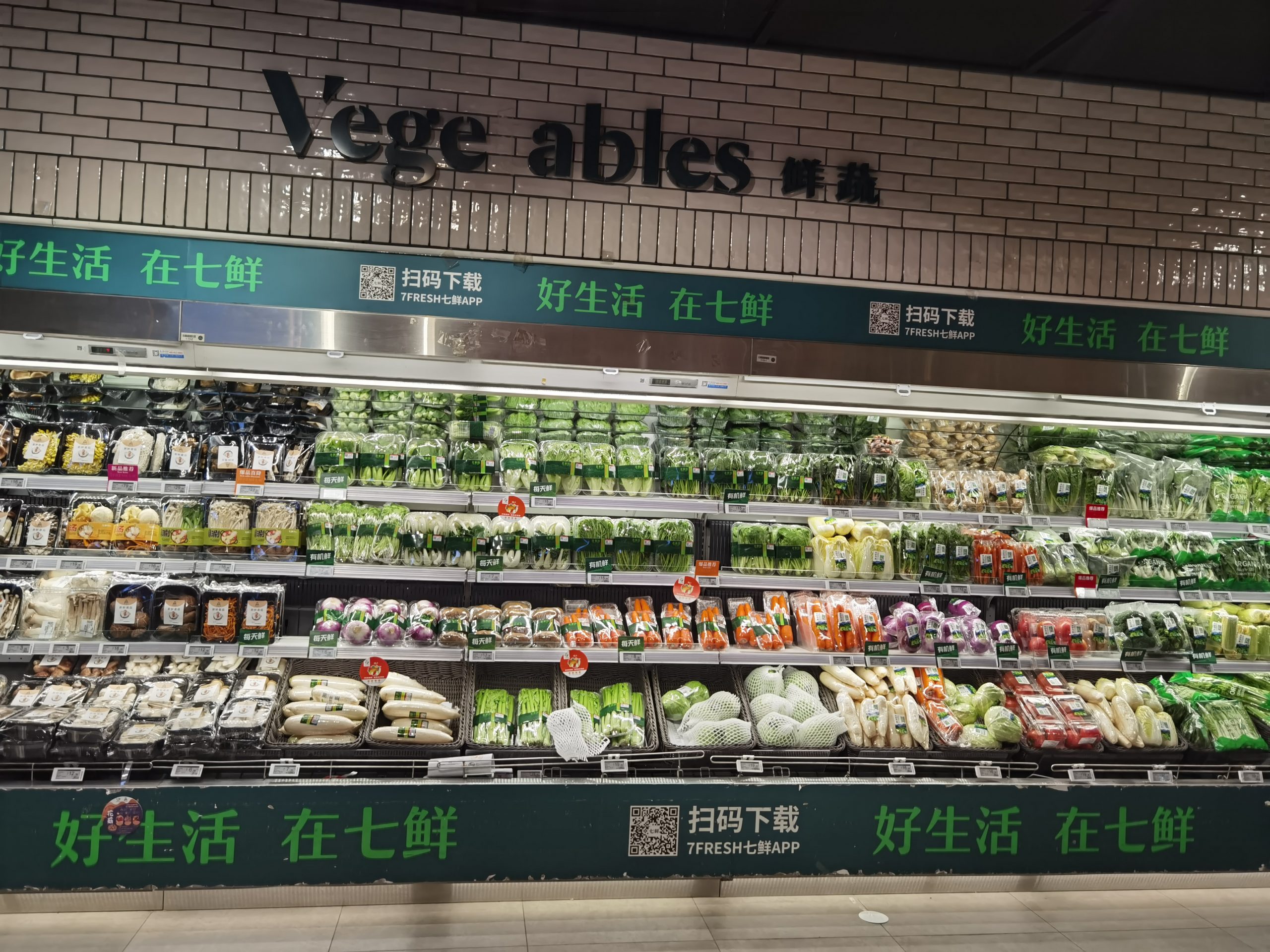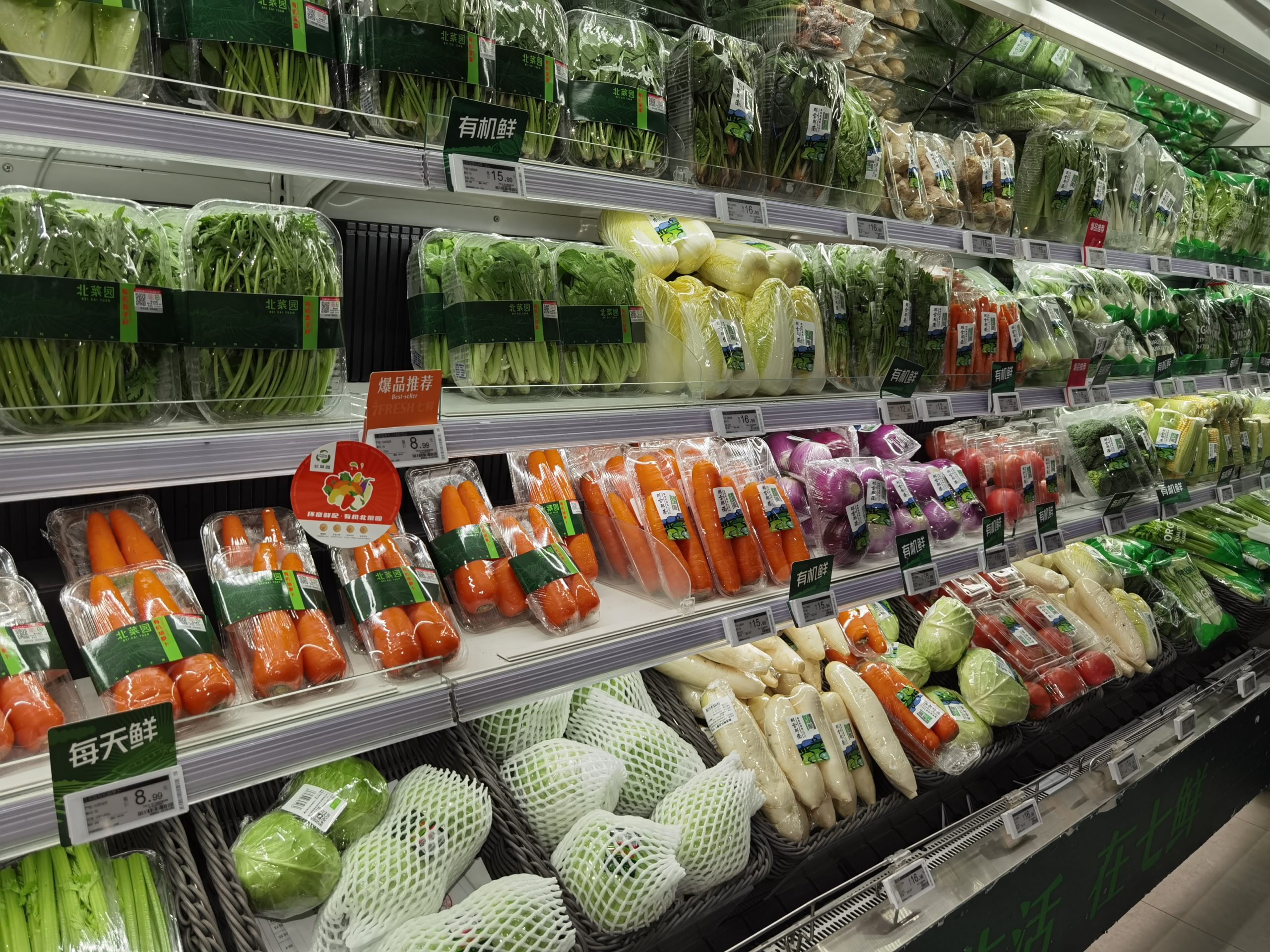JD.com’s 7FRESH stores offer express delivery
The goal of 7FRESH in 2022 is to continue developing new offline stores with a better choice of location and an updated product structure. In 2018, JD.com launched its first offline shop 7FRESH in Yizhuang Beijing, which had an area of 4,000 m2. Although the initial plan was to open up to 1,000 stores, JD.com has been feeling the pinch during the Covid-19 pandemic, which has changed shopping habits and consumer preferences for food. Also, the growing concerns about food safety and quality pushed 7FRESH to adjust its product structure and delivery models.
The largest fresh produce store in south-western China
On New Year’s Day, a 7FRESH store was opened in Lanrunmoli, reported to be the largest fresh food supermarket in south-western China. With an area of 6,000 m2, the store offers nearly 10,000 items from 22 categories, including seasonal fruit and vegetables, daily necessities and seafood products. 7FRESH has also launched a very strict quality control process its products must undergo. JD.com is giving priority to local products and has developed three different ways for classifying and inspecting national and local suppliers. These suppliers provide 3,400 different products from 10 different categories in full compliance with 7FRESH specifications.
Successful retail model during pandemic
The pandemic lockdowns generated significant obstacles for deliveries of fresh food orders. The situation was even more challenging for the most perishable and seasonal fresh produce. A relative latecomer to the “new retail model”, 7FRESH was originally set up by JD.com to develop online and offline sales as a response to the omnichannel retail model developed by the Alibaba group with its Ali Fresh Hippo. JD.com customers are mainly middle class white-collar workers who live in community residences. The stores are mainly located within business districts so as to create an offline experience area following a “supermarket + catering” business model. The stores sell fresh produce such as fruit and vegetables, seafood, ready meals and bakery items, as well as everyday products such as drinks, snacks and babycare goods. Each store offers 5,000 to 8,000 different items, of which fresh food accounts for over 70%.
Full technological and logistical integration
JD.com’s perishables supply chain covers the whole life cycle of products, including its own packhouses and strong cooperation at the source, with direct supply and purchase organisations at source, online and offline integration of sales, full cold-chain technology and multi-city logistics coverage. With growing disposable incomes and the rising popularity of the internet, online shopping in third- and fourth-tier cities is increasing rapidly, offering great potential for fresh produce demand to grow. But, while first- and second-tier cities are prime markets for organic food, price is still an obstacle in third- and fourth-tier cities.






